We may receive a commission when you use our affiliate links. However, this does not impact our recommendations.
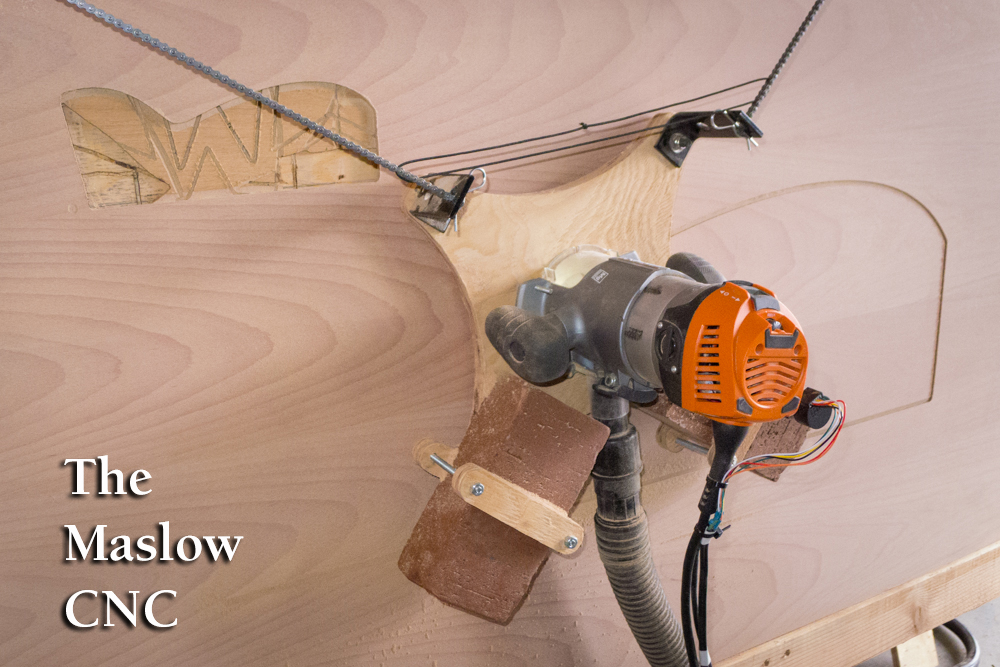
This CNC sits vertically rather horizontally. A router is suspended by chains and motors move it around as it cuts. The bricks are to stabilize the router.
A few weeks ago I made a post about the new Maslow CNC. In case you missed it, the two things that make it remarkable are the design (vertical and compact) and the price of just $500. It comes in kit form and its actually costs only $350 if you include some of your own plywood and 2-by material. As a reminder, the Maslow is not meant to be a replacement for a precise, heavily built table-based CNC. It takes up little room in a shop and designed for light duty work cutting plywood.
This is a crowd-funded Kickstarter project. Which means that there’s always a potential risk. Your commitment to back it makes you as much an investor as a buyer. The project has gotten a lot of attention and the number of backers increased dramatically over the last few weeks. To keep a handle on a timely delivery of the promised CNC kits, the campaign made a decision to limit the number of backers. With over 950 supporters they’ve already reached their goal. However, interest and demand are high. More kits are expected to be available to the public later next year.
The Maslow is Simple
As expected, the working prototype is very basic. The final kits should be more refined. What’s remarkable about it is that it really works. It’s just two DC motors with gears and encoders, a router suspended by chains and an Arduino based controller box the size of a deck of tarot cards. That’s it. It couldn’t be more simple. The fact that it cuts fairly accurately — less than 1/64″ so far, is amazing.
The focus right now is to firm up the basic mechanical details, the core controller software and the electronics that drive the machine. After that, finessing the design and fine tuning for accuracy become the critical tasks.
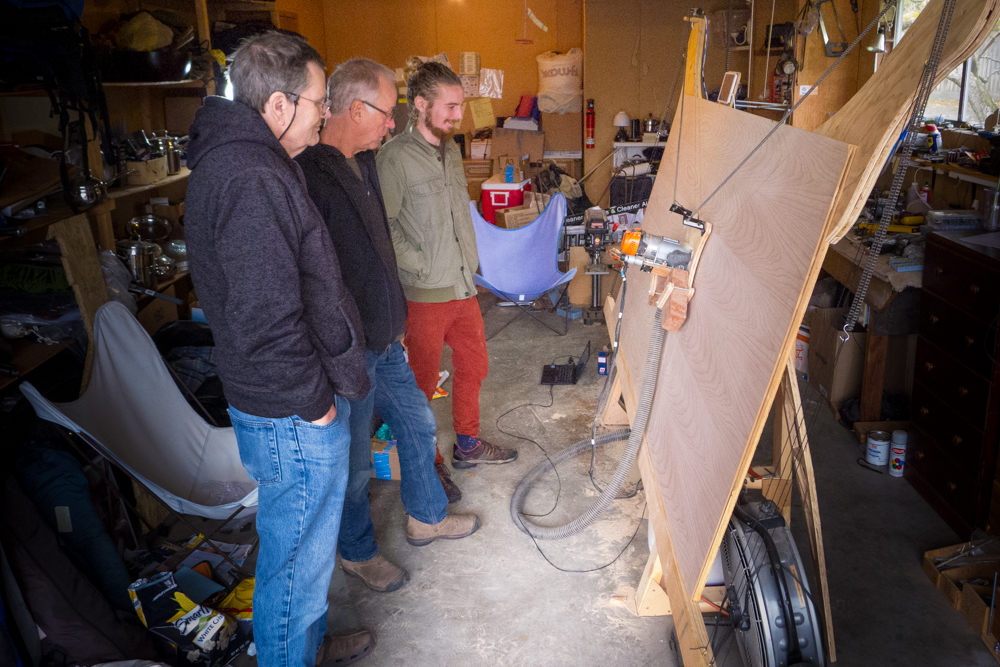
Furniture makers Curtis Erpelding, Bob Spangler and Maslow designer Bar Smith watch the CNC at work.
Time to See it in Person
Last week, I made the one hour trip from my Seattle area home to Port Townsend to visit the designer/engineer behind the $500 Maslow CNC, Bar Smith. I wasn’t the only one curious. Good friends, Bob Spangler and Curtis Erpelding — two of the best furniture makers I know (you can see their work here and here) were just as curious and came along to see it for themselves.
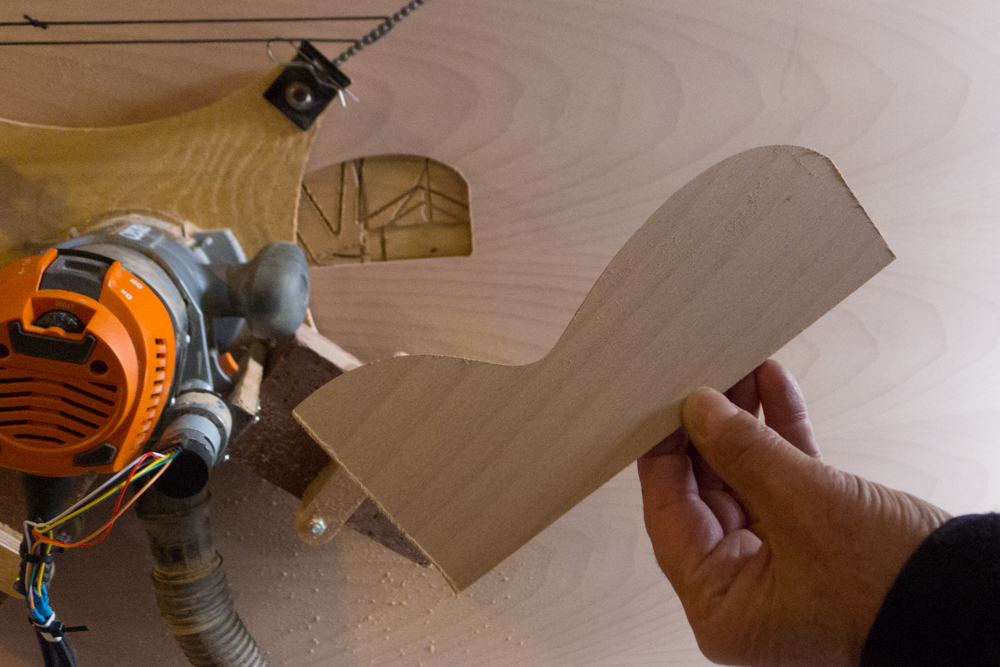
Even at this early stage, the Maslow is cutting smoothly for this pattern test. Next up on the list is improving the accuracy of the cuts.
The three of us regularly use CNCs and enjoy the many benefits that digital woodworking tools add to our work. Though the Maslow isn’t a substitute for our own custom built machines, we wanted to see if it could cut plywood or MDF accurately enough to be used to make furniture patterns. That alone would make it a very useful tool for woodworkers with small shops and tight budgets. I brought along a sample design to run tests. The good news is that even at this stage it’s getting pretty close.
In the last two weeks, an optional Z-axis to raise and lower the router bit has been added. A lot of woodworkers with router tables would love this feature. The machine’s feed rate is pretty slow, at 48″ per minute, but that’s OK. As digital woodworkers well know, when the CNC is running you can be working on something else in the shop. While watching the Maslow work, we checked the accuracy of the cuts and exchanged ideas for improvements.
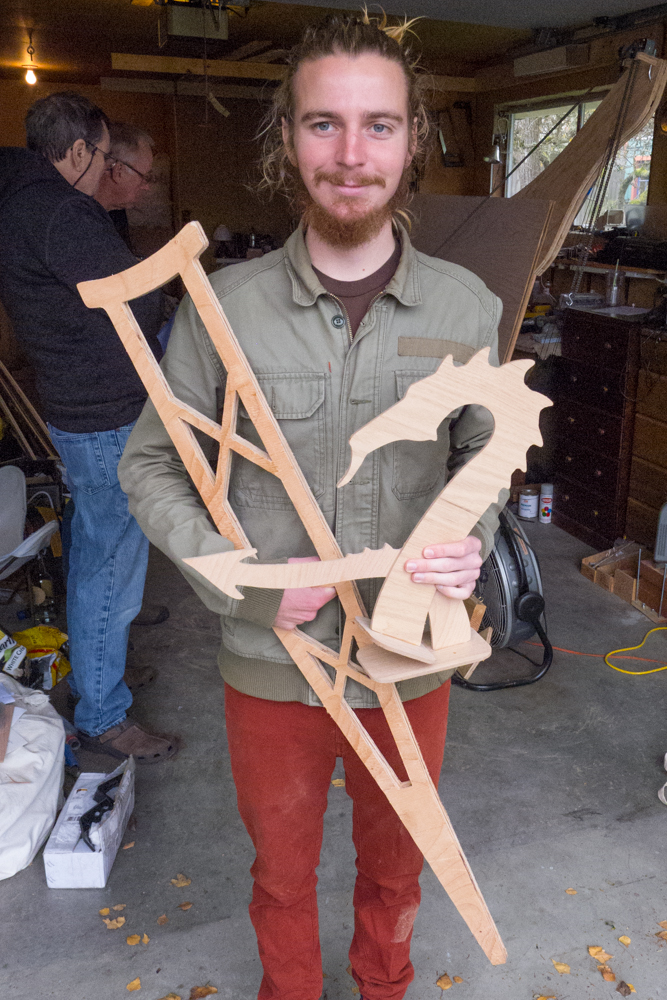
Bar Smith holding samples he’s cut. The sea serpent is for fun, of course. Among the many contributors is a designer who wants to use the Maslow CNC to make custom crutches for children in third world countries.
The Maslow is not just for woodworkers
One of Bar’s major priorities is to share the design of the machine. This is what’s called “open source.” What that means is that the design, the software and the plans to make it are freely shared and available for everyone to use and to, hopefully, improve upon. That makes it a community effort. Bar’s been getting a lot of input and support from backers around the world. Not only will this make it a better machine for woodworkers, it’ll help others, too. The hope is that the Maslow design can be used in countries with little access to the benefits of CNCs.
The Maslow is still a few months away from beta testing with a group of dedicated supporters. Three months after that they hope to ship completed kits to backers. Since I make regular trips to Port Townsend, I hope to check in on its progress from time-to-time.
For more information about the Maslow CNC visit the website here.
To see the entire series on the Maslow CNC click here.
Here are some supplies and tools we find essential in our everyday work around the shop. We may receive a commission from sales referred by our links; however, we have carefully selected these products for their usefulness and quality.








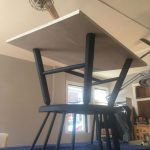
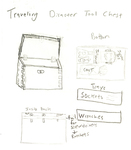
computer doing woodworking is not woodwork.